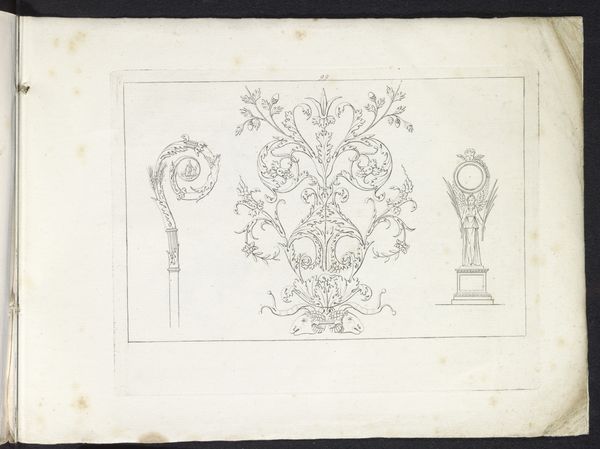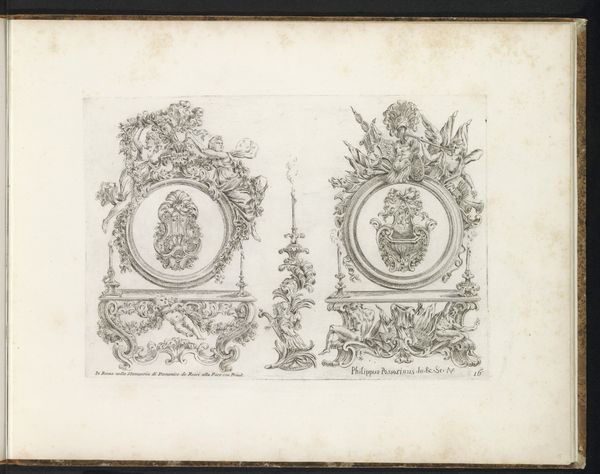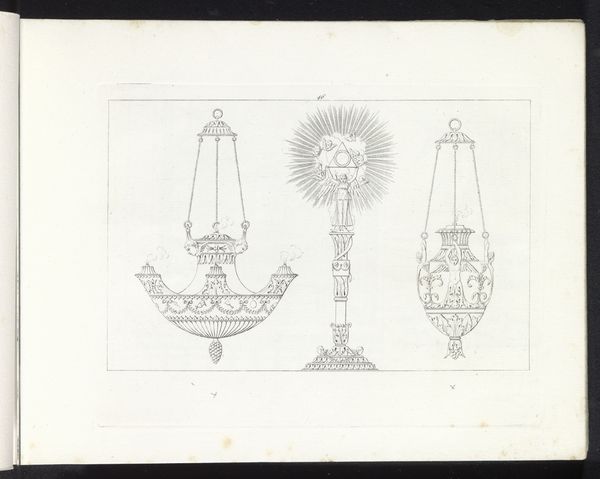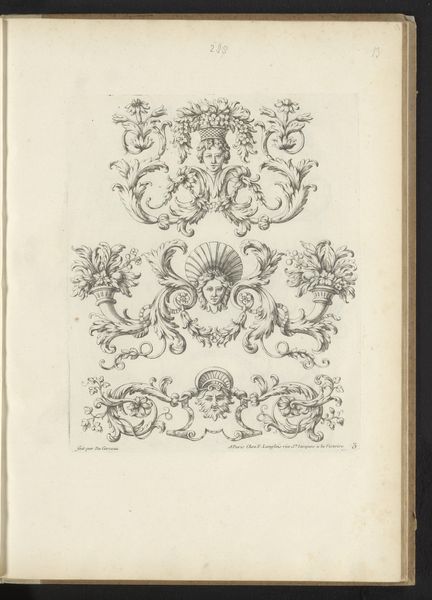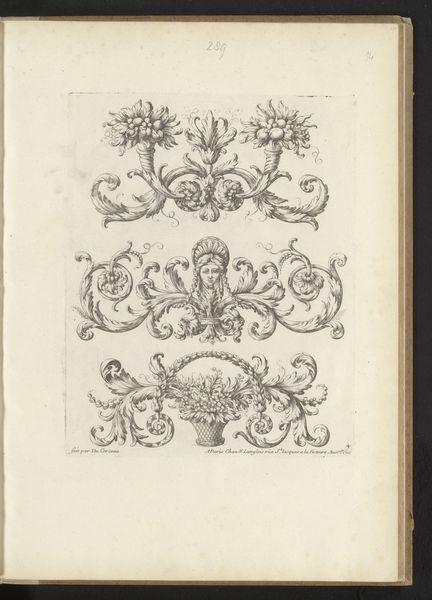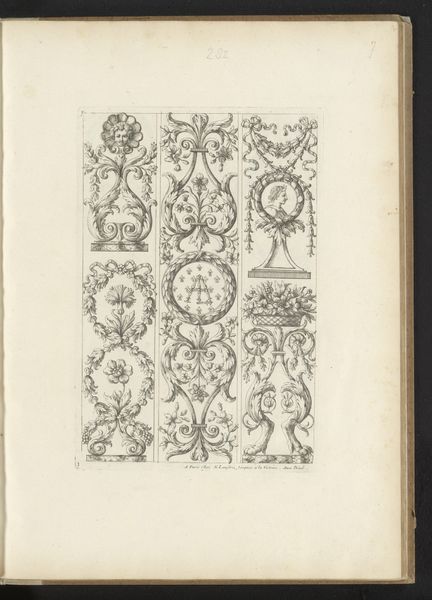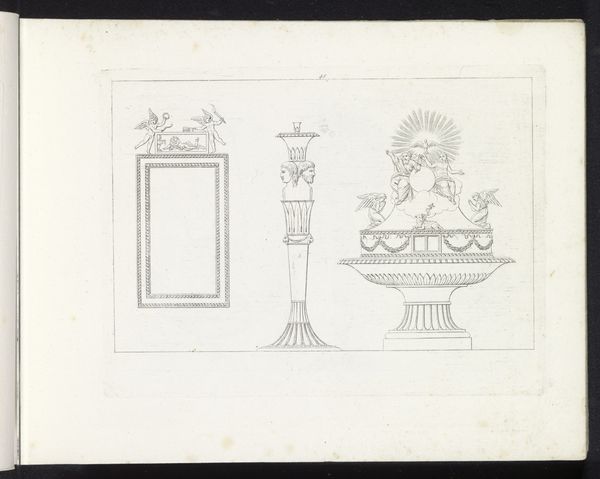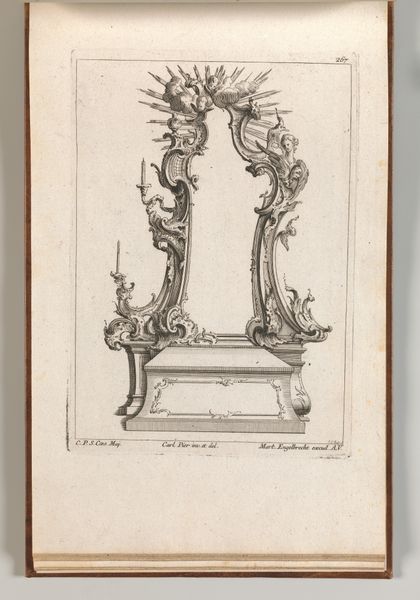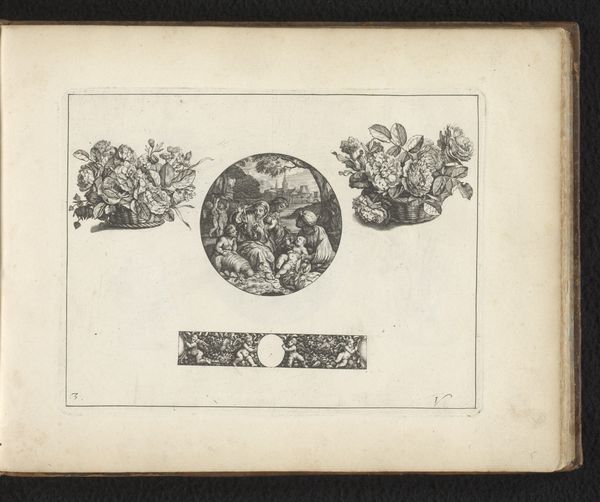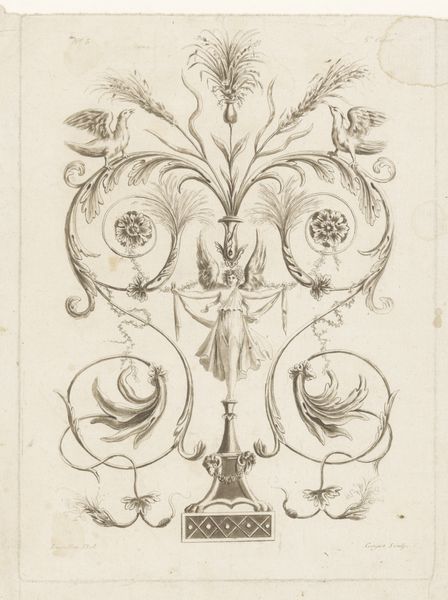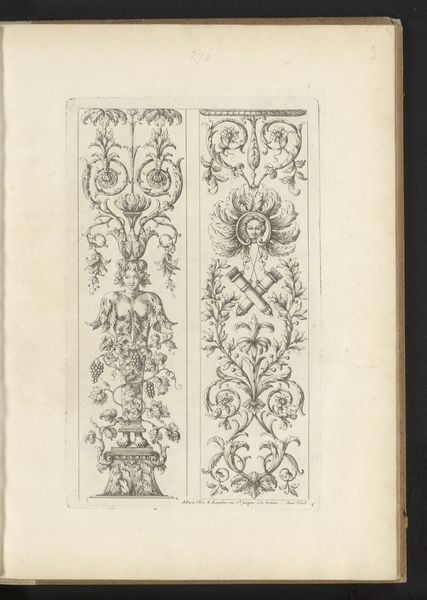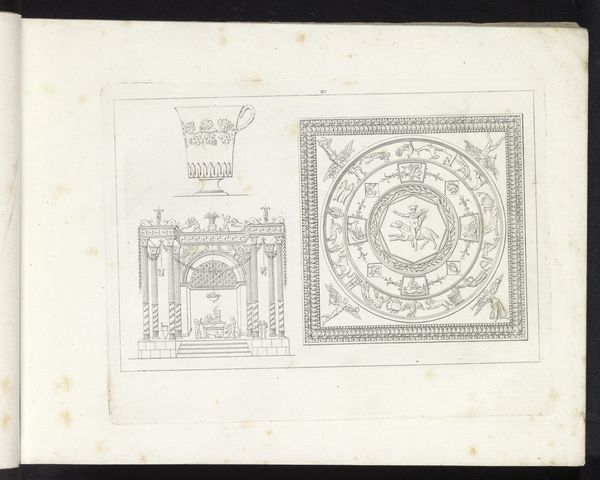
Twee monstransen en een wijwaterbak met een voorstelling van de doop van Chirstus in de Jordaan 1817
0:00
0:00
drawing, paper, ink
#
drawing
#
neoclacissism
#
pen sketch
#
paper
#
ink
#
history-painting
Dimensions: height 166 mm, width 215 mm
Copyright: Rijks Museum: Open Domain
Pietro Ruga made this image of two monstrances and a holy water font with the baptism of Christ in the Jordan, using etching. Etchings like this circulated as affordable prints, and were often collected into books, and this sheet was once part of a larger volume. The image’s meaning is created through a series of references familiar to Christians in Europe at the time. Monstrances like these are used to display the eucharist during mass, so Ruga is portraying objects central to Catholic ritual life. Meanwhile, the holy water font recalls the importance of baptism and purification. Considering that the Italian states were central to the counter-reformation at this time, we might assume that the image is conservative and dogmatic. But notice, these are not portrayals of actual objects, but design sketches. Ruga, in fact, was associated with the neo-classical school. By drawing these objects with neo-classical lines, Ruga subtly elevates the cultural status of his profession as a designer. To understand these images better, it is helpful to research Ruga's connections to the neo-classical movement. The role of the historian is to analyze the artistic choices made by Ruga, and consider the cultural conditions of the time.
Comments
No comments
Be the first to comment and join the conversation on the ultimate creative platform.
